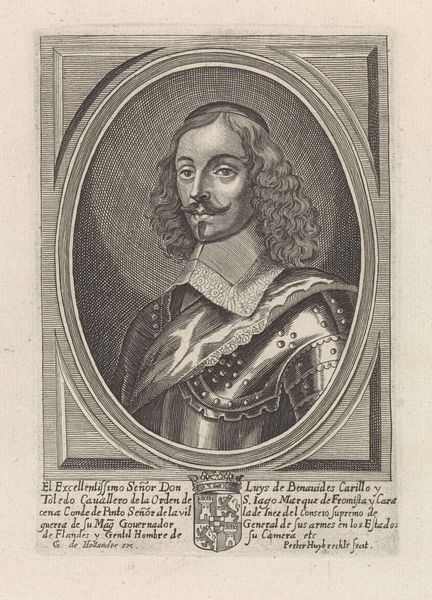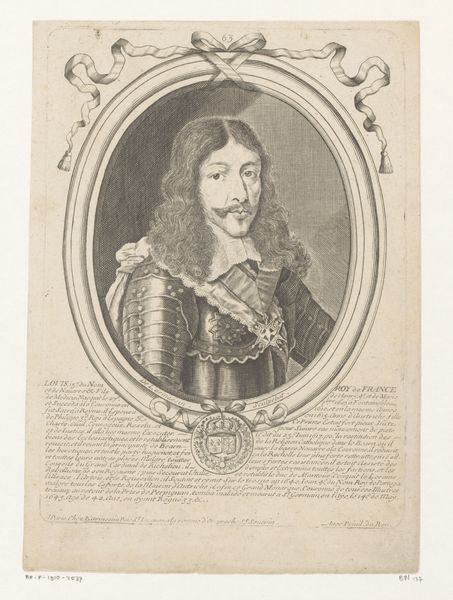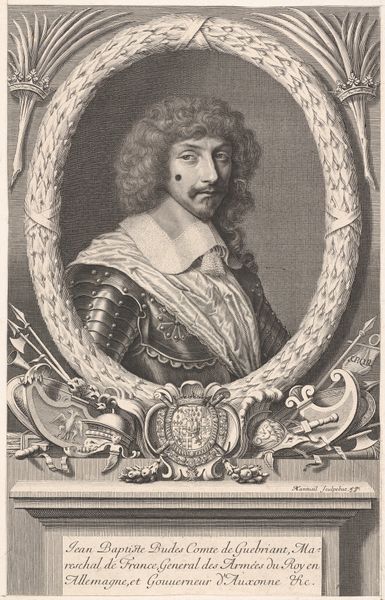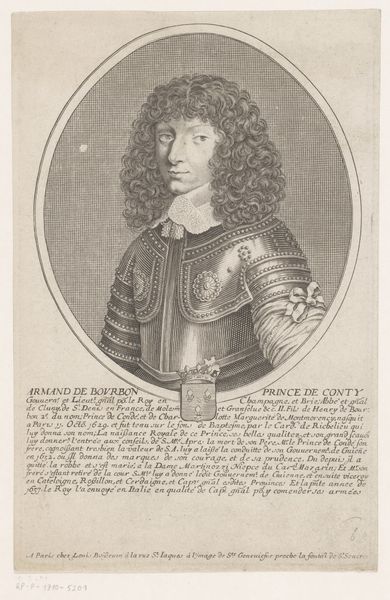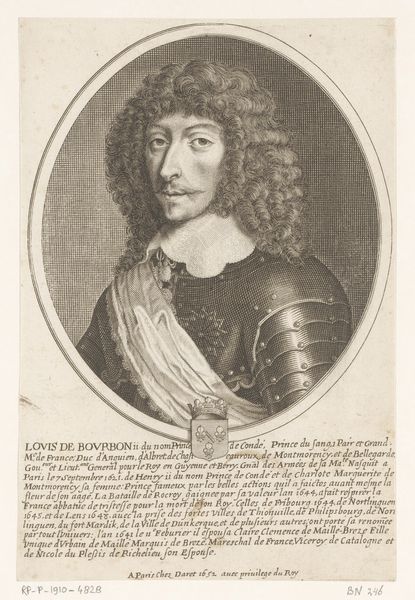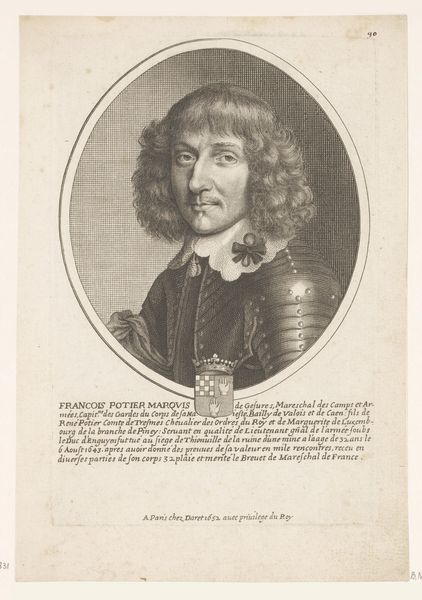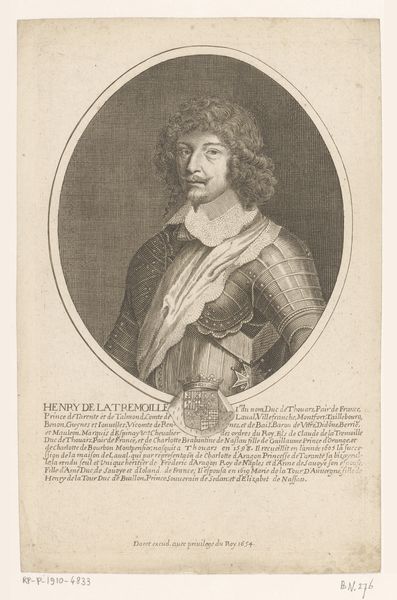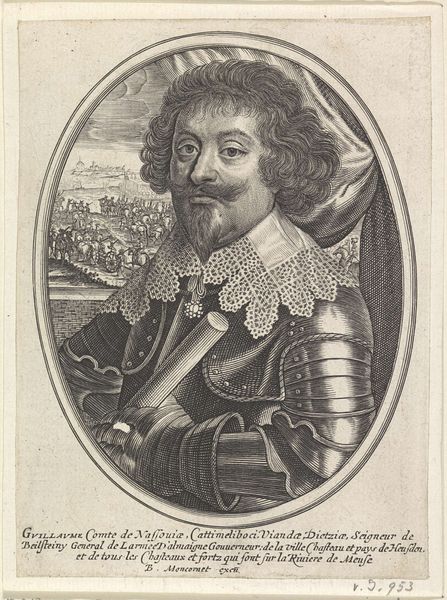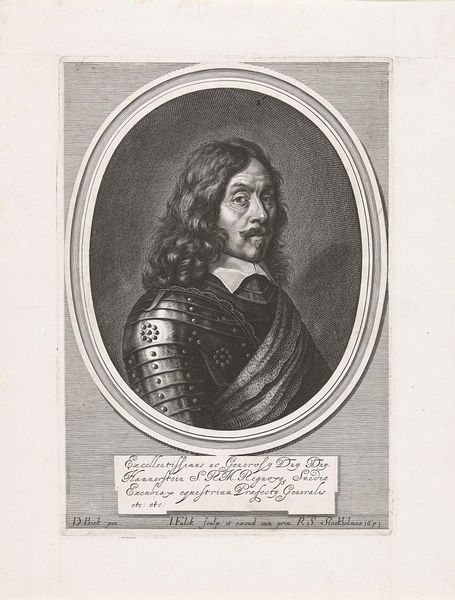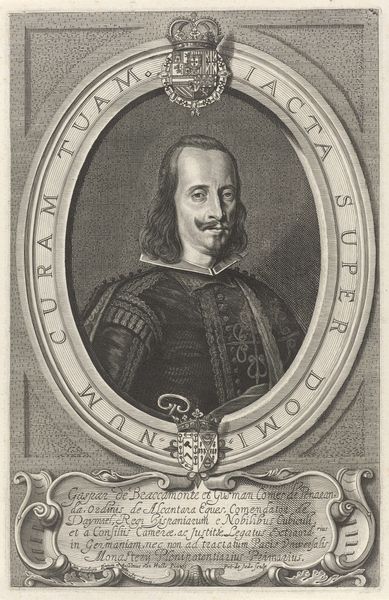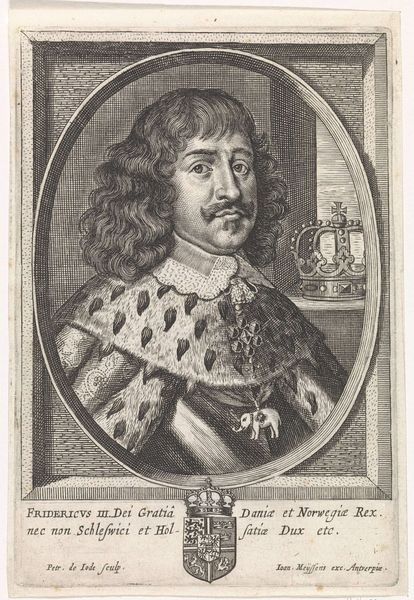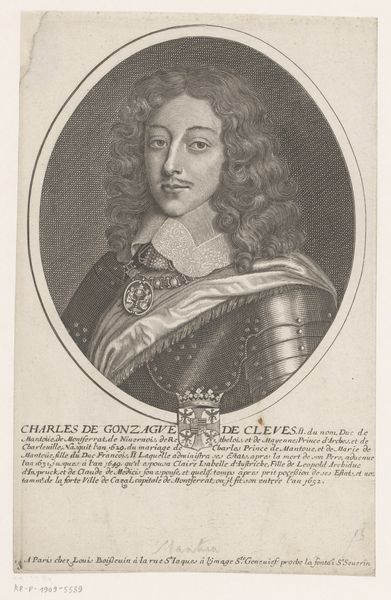
print, engraving
#
portrait
#
baroque
#
yellowing background
# print
#
old engraving style
#
figuration
#
historical photography
#
history-painting
#
engraving
Dimensions: height 203 mm, width 131 mm
Copyright: Rijks Museum: Open Domain
Curator: We are looking at an engraving titled "Portret van Jean-Baptiste Budes de Guébriant," created by Jean Frosne in 1652. Editor: The figure, framed in an oval, has a gravity that almost overwhelms the decorative frills of the period costume, even given the yellowed, almost antique finish that characterizes the entire print. It's baroque grandeur, but feels...contained, somehow. Curator: Indeed. The subject, Jean-Baptiste Budes de Guébriant, was a prominent military figure, a Lieutenant General. Note how Frosne uses line and shadow to emphasize the reflective surfaces of his armor, alluding to his profession and status. Editor: Absolutely, I'm drawn to the process itself. This wasn’t a one-off painting but a multiplication. The engraving process inherently lends itself to reproduction and dissemination, which would have bolstered his image and, by extension, the monarchy’s authority. Consider the labor that went into carving those lines, the social context of printmaking at that time. Curator: The intricate details—the curls of his hair, the lace collar—demand close looking. But consider also the textual element: beneath the portrait, there's a dedication that elevates Guébriant to the level of heroes. The formal elements, even within a print, function to promote and solidify power. Editor: I can't help but focus on how that script visually reinforces the hierarchical social order and the flow of information in the service of that order. Think about the materials: the paper, the ink, where these originated. Those sources, controlled and used for the promulgation of a specific view of history. Curator: I see what you are saying about the conditions in which it was made, and to that I'll simply add how carefully his face has been rendered in comparison to other elements. Frosne creates a compelling and formal visual tribute to Guébriant. Editor: I see a visual encoding deeply interwoven with early modern manufacturing, trade, and socio-political conditions. Both offer potent frameworks to examine this portrait.
Comments
No comments
Be the first to comment and join the conversation on the ultimate creative platform.
